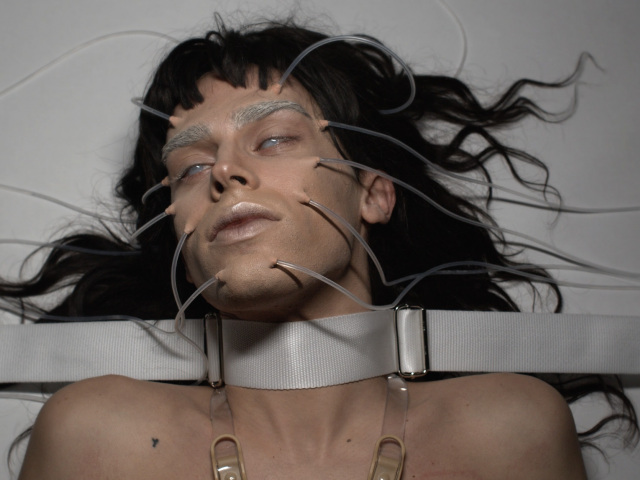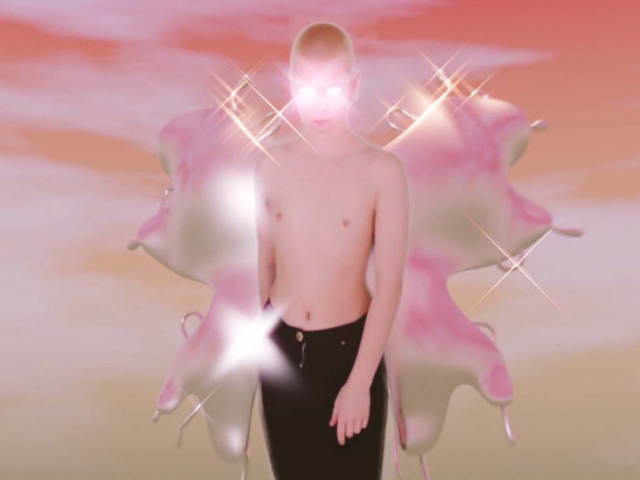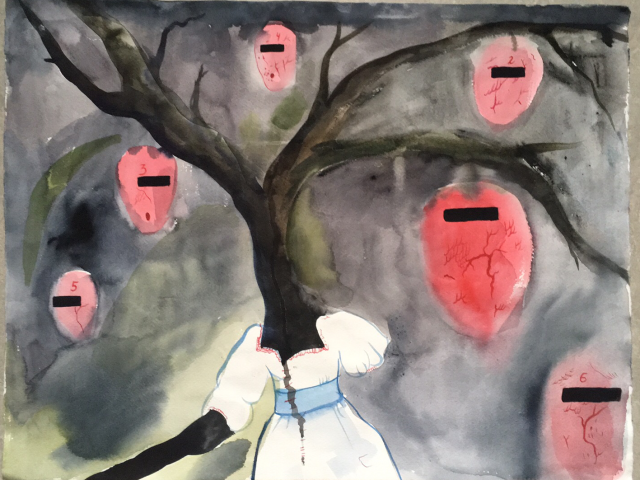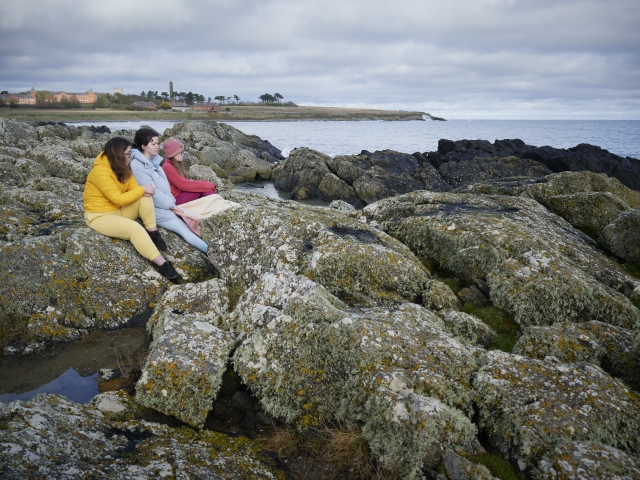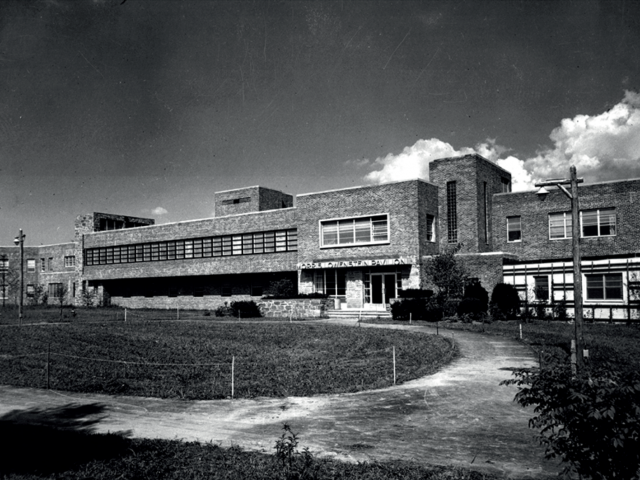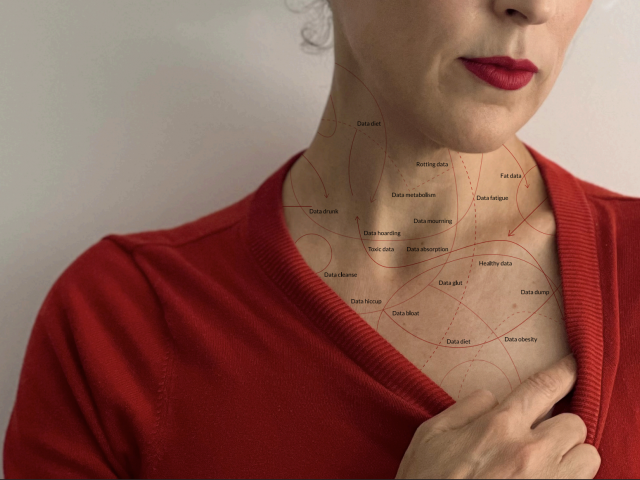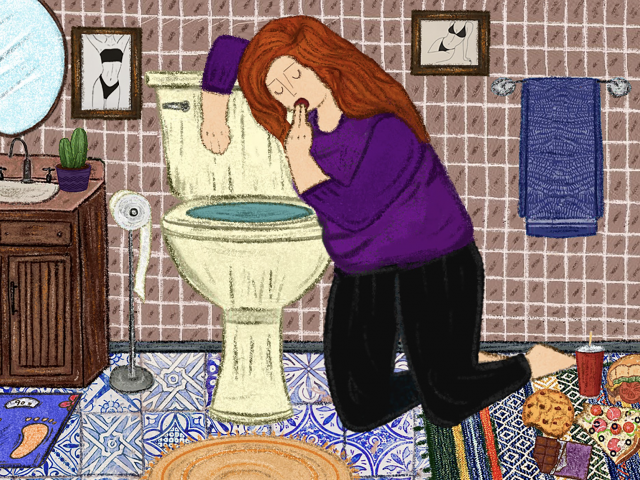- English
- Русский
THE NEW SUBJECT. MUTATING RIGHTS AND CONDITIONS OF LIVING BODIES
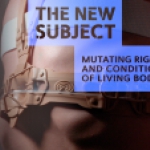
The New Subject. Mutating Rights and Conditions of Living Bodies
Anastasia Alekhina, Sarah Browne, Stephan Blumenschein, Ofri Cnaani, Gluklya (Natalya Pershina-Yakimanskaya), Saemundur Thor Helgason, Noah Holtegaard, Sara Khayat, Nina Støttrup Larsen, Adina Pintilie
Co-curated by TOK /Anna Bitkina and Maria Veits/ and Cathrine Gamst
September 29 - November 25, 2023
Kunsthal NORD, Aalborg
Opening: September 29, 16.00 - 18.00
TOK Curators continue to explore connections between somatic, technological and legislative aspects of our existence and are excited to announce the 2nd exhibition The New Subject. Mutating Rights and Conditions of Living Bodies that opens on September 29 at Kunsthal NORD in Aalborg, Denmark.
Exhibition The New Subject. Mutating Rights and Conditions of Living Bodies at Kunsthal NORD is the second edition in a series of interconnected exhibitions and accompanying public events about the evolving challenges of the body in connection to global biopolitics and technological developments, focusing on the legal, somatic and cognitive dimensions.
The New Subject is inspired by the ideas of Achille Mbembe, who argues that today’s societies of control rely on the "manufacture of a new subject that is at once a physiological assemblage, a synthetic and electronic assemblage, and a neuro-biological assemblage", the project aims to decode and expose the repressive and manipulative mechanisms incorporated into various constituents of the contemporary state and society. By examining the body as a contested site for ideological and political power games, the exhibition series also aims to explore potential modes of existence that defy the coercive machinations of state engineering.
While the first exhibition of The New Subject exhibition at Konsthall C in Stockholm (June 02 - August 20, 2023) responded to the notion of a sovereign body treated as disposable by corporations and governments, the second exhibition at Kunsthal NORD centers on various aspects of public health and medical categories, addressing issues related to stigmatization and exclusion based on both mental and physical states. It also delves into an analysis of the historical background and contemporary context of health policies and how they have been shaped by the influence of capitalism. The exhibition unites both existing and new works by ten artists from diverse geographical backgrounds and includes video and VR installations, objects, drawings, textile art, watercolors, photography and wearable sculptures. Some of the projects draw deeply from the artists’ own personal bodily and mental experiences, while others have emerged from their extensive research of impact of technological surveillance on personal autonomy and bodily integrity, as well as the exploration of connections between pharmaceutical industry, state legislation and shifts in the notions of “norm” and “deviance”.
Protagonists of the video work Echo’s Bones (2022) by Sarah Browne are autistic young people that propose to the viewers an alternative way of communication by demonstrating other possibilities of sensing the world. In the normative reality they are pathologised as disordered, while in the context of Brown’s film her heroines are valued as experimental, creative and humorous. Immersive multimedia installation, with VR experience In Search for The Lost Body (2022) by Adina Pintilie explores virtual reality as an embodied experience, which can facilitate the radical transfiguration of the body and its sensorial architecture to transcend spatial, temporal, and emotional boundaries. Through the digitally created environment, visitors have the opportunity to immerse themselves in the perspective of the Other. Such an experience allows them to undertake the journey from the standpoint of the Other's subjectivity, potentially leading to shifts in perspectives and behavior which is aiming at a creation of a more inclusive and pluralistic society.
The exhibition also presents several artistic research projects which aim at confronting conditions of medical labour, investigating the history of earlier medical experiments and emergence of new diseases due to post-capitalist and environmental conditions. In his installation Selected Mo(ve)ments. Deferral at Hillside (2023) Stephan Blumenschein presents the results and artifacts of his artistic research of connections between the Hillside Hospital's architecture and how panic became a recognized medical category due to special movements of patients observed in a building’s corridor. The artist also draws attention to the gaps in the hospital's archive, with his primary objective being to generate (in)visibilities, prompting a reevaluation of what often goes unnoticed and unspoken. Nina Støttrup Larsen in her new project The Swallows (2023) delves into the cost of healing by examining the backstory of the initial patent for citalopram, which later evolved into the antidepressant medication known as Cipramil in 1977. Citalopram became incredibly popular and largely contributed to Lundbeck becoming a multinational company and a monopolist in the medical industry. Lundbeck, a key player in the Danish economy, was determined to retain its patent rights even after they had expired. This stance led to protracted legal battles, resulting in one of the longest-running patent disputes, with appeals being filed repeatedly.
Second edition of The New Subject continues to examine the nature of technological violence affecting our bodies, while also using them as a source of information that can be capitalized. In the series of prints Statistical Bodies (2020-2023) Ofri Cnaani studies the human body as a measurable device, engaging with questions of body datafication and the incomputable. She explores the impact of algorithmic capitalism on the human body, questioning our attunement to technological systems and the commodification of body data.
Some exhibition works delve into discourse about body conditions that exist on the fringes of societal and legal “norms” by transcending the conventional boundaries of gender and human anatomy. In her artistic practice, Gluklya often addresses vulnerability and inclusivity as political concepts by examining the societal roles imposed on women. Through her series of drawings and conceptual clothing titled Empowering Vulnerability (2006-2022), she offers a critical response to the society's expectations of women by intervening into the qualities of niceness, perfection, balance, unwavering kindness, and perpetual silence traditionally prescribed to women by patriarchy. Some of the watercolors evoke the sensory shifts in our behavior during and after the COVID-19 pandemic, heightening our awareness of physical distance, touch, and our shared vulnerability. The installation by Noah Holtegaard and the drawings by Sara Khayat from her various series reflect on the artists’ own experience of queerness and its connection to visual culture. While Noah’s work presents the process of becoming a more fantastic version of himself, Sara’s illustrations capture the day-to-day routine of the characters of her series - from a girl who defies rigid gender roles to the young people of the LGBTIQ community in Damascus.
In the quest for protective mechanisms, often arising from the conditions of post-capitalist neoliberal life, some artists take a pragmatic approach and offer solutions rooted in the potential of their own bodies. For instance, Saemundur Thor Helgason has developed the Solar Plexus Pressure Belt™ G2 (2023), a wearable device that aided him in overcoming anxiety and panic attacks, which initially surfaced in the aftermath of the 2008 financial crisis, all without resorting to pharmaceutical medications. He stumbled upon the soothing capabilities of his own body when he coincidentally discovered that applying pressure to the solar plexus area using his fingers could alleviate his anxiety. Anastasia Alekhina's wearable accessory, The Criticism of Violence 2.0 (2021), transmutes her personal encounter with domestic abuse into an exploration of the fundamental nature of human violence as a bodily phenomenon, with the ultimate goal of identifying, mitigating, and cultivating self-control. Despite its appearance as elegant jewelry, this artwork serves as a shock collar engineered for emotional regulation, responding to the wearer's vocal volume with a mild electric discharge that, while non-harmful to health, delivers a tangible sensation to the neck.
In each exhibition, a comprehensive historical timeline is presented to track the evolving legal and technological landscape concerning both the physical and mental aspects of living bodies, with a specific focus on highlighting notable legislative and biopolitical shifts, including local initiatives that seek to empower and regulate the body. In the case of Aalborg, this timeline compiled by Kunsthal NORD artistic diretor Cathrine Gamst revolves around exploring the interplay between politics, healthcare, law, and state control in Denmark.
About Kunsthal Nord Kunsthal NORD in Aalborg, Denmark has been a Contemporary Art Centre since 2009 with its mission to curate and communicate experimental contemporary Danish and international visual art with a strong regional commitment. Its raw, industrial exhibition spaces offer an ideal backdrop for innovative and thought-provoking displays and introduce new, untested art to the region while actively engaging in the contemporary art scene. Kunsthal NORD is dedicated to showcasing artists who push the boundaries of tradition and create unique expressions. We emphasize dialogue and audience engagement, serving as a platform for discussions and conversations on contemporary art.
Its annual program includes up to eight exhibitions, featuring Danish and international contemporary art across various media, generations, and regional backgrounds. These exhibitions range from solo and duo displays to group presentations, drawing audiences from local to international levels. In addition to exhibitions, Kunsthal NORD hosts guided tours, artist talks, debates, art performances, and masterclasses. These initiatives aim to foster sustainable dialogues between the institution, artists, and our diverse audience. The artistic director Catherine Gamst has been at Kunsthal NORD since 2021. She has a masters degree in Media Science and Art history and has previously worked at Galleri Image and Aarhus Art Academy.
The New Subject is a series of interconnected exhibitions and accompanying public events about the evolving challenges of the body in connection to global biopolitics and technological developments, focusing on the legal, somatic and cognitive dimensions. Initiated by TOK Curators it is a collaboration between the curatorial duo and four European art institutions: Konsthall C (Sweden), Kunsthal NORD (Denmark), Oksasenkatu 11 (Finland) and KINDL – Center for Contemporary Art (Germany). Each participating exhibition venue offers an exhibition co-curated by TOK and the local curator, which addresses global body-related issues while also acknowledging the specific local contexts and challenges.
The first exhibition of the series at Konsthall C responded to the notion of a sovereign body treated as disposable by corporations and governments. Through various artistic mediums the exhibition explored the ways in which power structures and state apparatuses impact the body, employing legislation as a tool for control, often leading to the violation of rights and freedoms.



